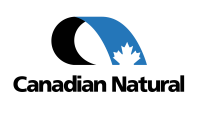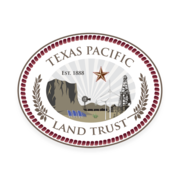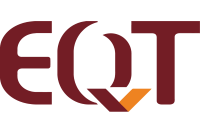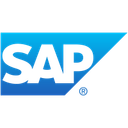
Conocophillips
NYSE:COP

Profitability Summary
Conocophillips's profitability score is hidden . We take all the information about a company's profitability (such as its margins, capital efficiency, free cash flow generating ability, and more) and consolidate it into one single number - the profitability score. The higher the profitability score, the more profitable the company is.
Profitability Score
We take all the information about a company's profitability (such as its margins, capital efficiency, free cash flow generating ability, and more) and consolidate it into one single number - the profitability score. The higher the profitability score, the more profitable the company is.
We take all the information about a company's profitability (such as its margins, capital efficiency, free cash flow generating ability, and more) and consolidate it into one single number - the profitability score. The higher the profitability score, the more profitable the company is.
Profitability Score
Margins
Profit margins represent what percentage of sales has turned into profits. Simply put, the percentage figure indicates how many cents of profit the company has generated for each dollar of sale.
Profit margins help investors assess if a company's management is generating enough profit from its sales and whether operating costs and overhead costs are being contained.
Earnings Waterfall
Conocophillips

|
Revenue
|
54.7B
USD
|
|
Cost of Revenue
|
-28.8B
USD
|
|
Gross Profit
|
26B
USD
|
|
Operating Expenses
|
-13.5B
USD
|
|
Operating Income
|
12.5B
USD
|
|
Other Expenses
|
-3.3B
USD
|
|
Net Income
|
9.2B
USD
|
Margins Comparison
Conocophillips Competitors

| Country | Company | Market Cap |
Gross Margin |
Operating Margin |
Net Margin |
||
|---|---|---|---|---|---|---|---|
| US |

|
Conocophillips
NYSE:COP
|
114.3B USD |
47%
|
23%
|
17%
|
|
| MY |
R
|
Reach Energy Bhd
KLSE:REACH
|
15.4T MYR |
92%
|
14%
|
-9%
|
|
| CN |
C
|
CNOOC Ltd
SSE:600938
|
687.7B CNY |
50%
|
45%
|
33%
|
|
| US |

|
EOG Resources Inc
NYSE:EOG
|
61.9B USD |
62%
|
36%
|
27%
|
|
| CA |

|
Canadian Natural Resources Ltd
TSX:CNQ
|
85B CAD |
49%
|
27%
|
17%
|
|
| US |
P
|
Pioneer Natural Resources Co
LSE:0KIX
|
46B USD |
51%
|
34%
|
25%
|
|
| US |

|
Hess Corp
NYSE:HES
|
40B USD |
78%
|
37%
|
21%
|
|
| US |

|
Diamondback Energy Inc
NASDAQ:FANG
|
39.6B USD |
71%
|
42%
|
30%
|
|
| US |

|
Texas Pacific Land Corp
NYSE:TPL
|
31B USD |
93%
|
76%
|
64%
|
|
| US |
C
|
Continental Resources Inc
F:C5L
|
25.8B EUR |
92%
|
58%
|
40%
|
|
| US |

|
EQT Corp
NYSE:EQT
|
29.6B USD |
57%
|
7%
|
4%
|
Return on Capital
Return on capital ratios give a sense of how well a company is using its capital (equity, assets, capital employed, etc.) to generate profits (operating income, net income, etc.). In simple words, these ratios show how much income is generated for each dollar of capital invested.


Return on Capital Comparison
Conocophillips Competitors

| Country | Company | Market Cap | ROE | ROA | ROCE | ROIC | ||
|---|---|---|---|---|---|---|---|---|
| US |

|
Conocophillips
NYSE:COP
|
114.3B USD |
16%
|
8%
|
13%
|
9%
|
|
| MY |
R
|
Reach Energy Bhd
KLSE:REACH
|
15.4T MYR |
-10%
|
-2%
|
4%
|
13%
|
|
| CN |
C
|
CNOOC Ltd
SSE:600938
|
687.7B CNY |
20%
|
13%
|
21%
|
18%
|
|
| US |

|
EOG Resources Inc
NYSE:EOG
|
61.9B USD |
22%
|
14%
|
21%
|
18%
|
|
| CA |

|
Canadian Natural Resources Ltd
TSX:CNQ
|
85B CAD |
15%
|
8%
|
13%
|
9%
|
|
| US |
P
|
Pioneer Natural Resources Co
LSE:0KIX
|
46B USD |
21%
|
14%
|
20%
|
16%
|
|
| US |

|
Hess Corp
NYSE:HES
|
40B USD |
27%
|
11%
|
21%
|
15%
|
|
| US |

|
Diamondback Energy Inc
NASDAQ:FANG
|
39.6B USD |
12%
|
7%
|
11%
|
8%
|
|
| US |

|
Texas Pacific Land Corp
NYSE:TPL
|
31B USD |
42%
|
38%
|
47%
|
67%
|
|
| US |
C
|
Continental Resources Inc
F:C5L
|
25.8B EUR |
42%
|
19%
|
31%
|
23%
|
|
| US |

|
EQT Corp
NYSE:EQT
|
29.6B USD |
1%
|
1%
|
1%
|
1%
|
Free Cash Flow
Free cash flow (FCF) is the money a company has left over after paying its operating expenses and capital expenditures. The more free cash flow a company has, the more it can allocate to dividends, paying down debt, and growth opportunities.
If a company has a decreasing free cash flow, that is not necessarily bad if the company is investing in its growth.























































 You don't have any saved screeners yet
You don't have any saved screeners yet
